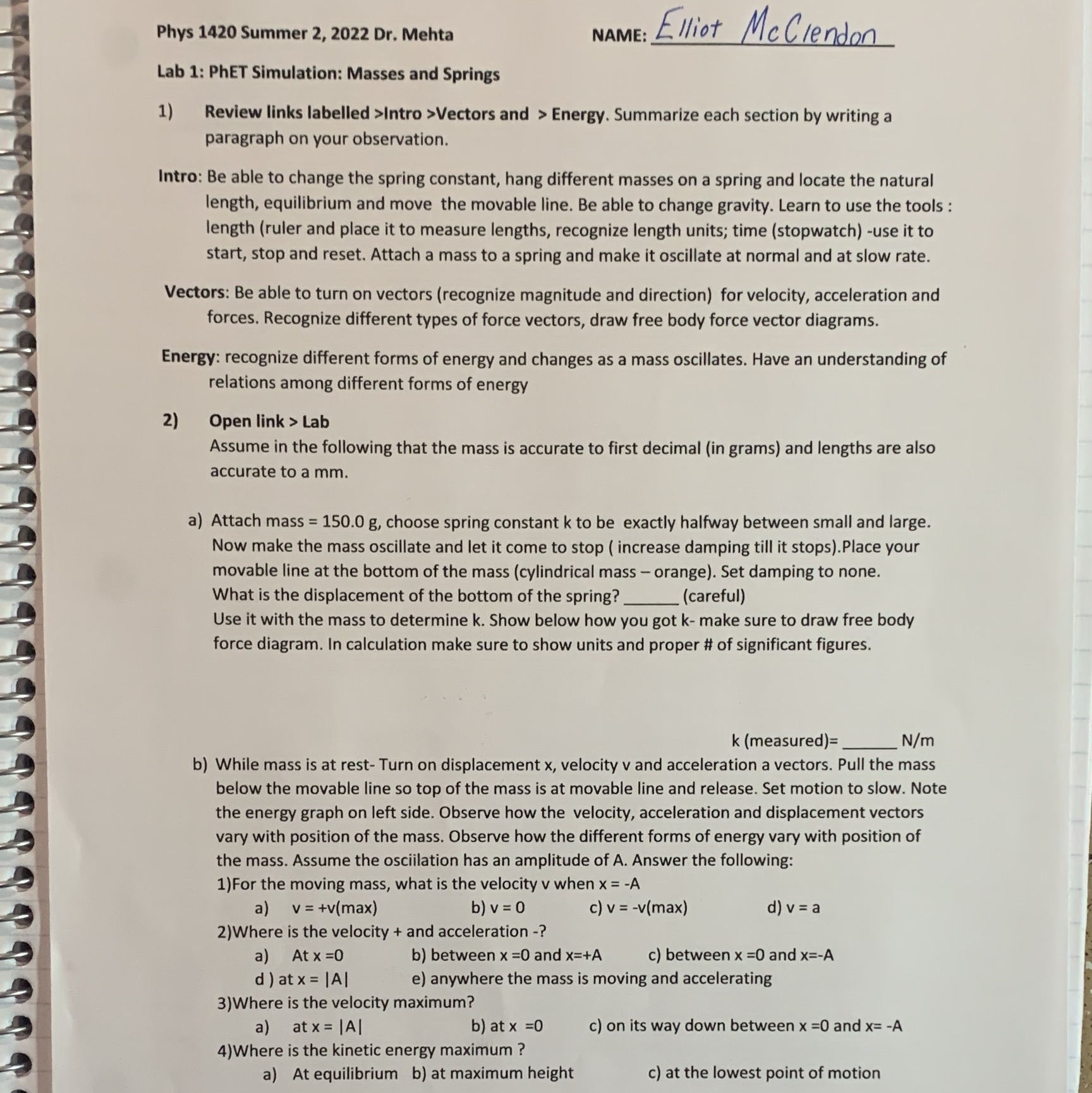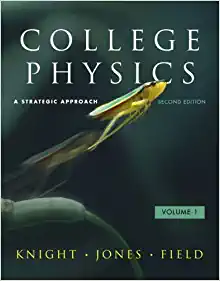Phys 1420 Summer 2, 2022 Dr. Mehta NAME: Elliot Mcclendon Lab 1: PhET Simulation: Masses and Springs 1 ) Review links labelled >Intro >Vectors and > Energy. Summarize each section by writing a paragraph on your observation. Intro: Be able to change the spring constant, hang different masses on a spring and locate the natural length, equilibrium and move the movable line. Be able to change gravity. Learn to use the tools : length (ruler and place it to measure lengths, recognize length units; time (stopwatch) -use it to start, stop and reset. Attach a mass to a spring and make it oscillate at normal and at slow rate. Vectors: Be able to turn on vectors (recognize magnitude and direction) for velocity, acceleration and forces. Recognize different types of force vectors, draw free body force vector diagrams. Energy: recognize different forms of energy and changes as a mass oscillates. Have an understanding of relations among different forms of energy 2) Open link > Lab Assume in the following that the mass is accurate to first decimal (in grams) and lengths are also accurate to a mm a) Attach mass = 150.0 g, choose spring constant k to be exactly halfway between small and large. Now make the mass oscillate and let it come to stop ( increase damping till it stops). Place your movable line at the bottom of the mass (cylindrical mass - orange). Set damping to none. What is the displacement of the bottom of the spring? (careful) Use it with the mass to determine k. Show below how you got k- make sure to draw free body force diagram. In calculation make sure to show units and proper # of significant figures. k (measured)= . N/m b) While mass is at rest- Turn on displacement x, velocity v and acceleration a vectors. Pull the mass below the movable line so top of the mass is at movable line and release. Set motion to slow. Note the energy graph on left side. Observe how the velocity, acceleration and displacement vectors vary with position of the mass. Observe how the different forms of energy vary with position of the mass. Assume the oscillation has an amplitude of A. Answer the following: 1) For the moving mass, what is the velocity v when x = -A a) v= +v(max) b ) v = 0 c) v = -v(max) d) v = a 2)Where is the velocity + and acceleration -? a) At x =0 b) between x =0 and X=+A c) between x =0 and x=-A d ) at x = |Al e) anywhere the mass is moving and accelerating 3)Where is the velocity maximum? a) at x = [A| b) at x =0 c) on its way down between x =0 and x= -A 4)Where is the kinetic energy maximum ? a) At equilibrium b) at maximum height c) at the lowest point of motion







